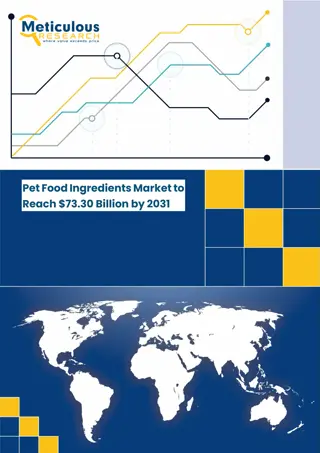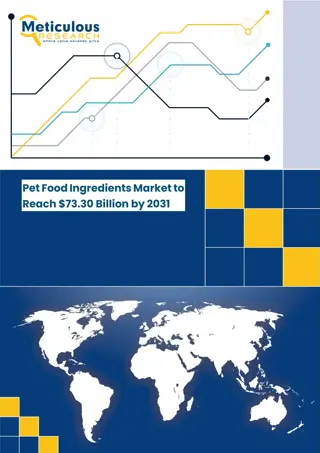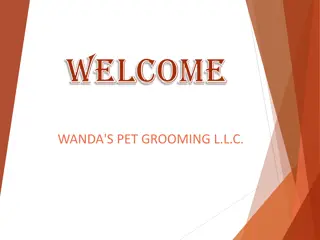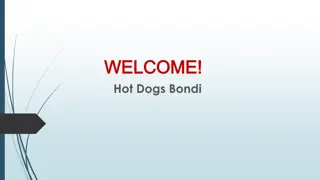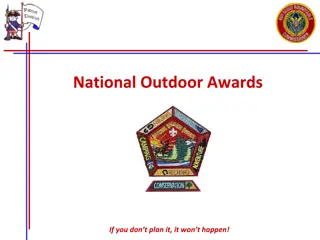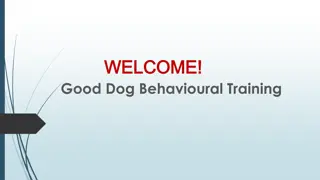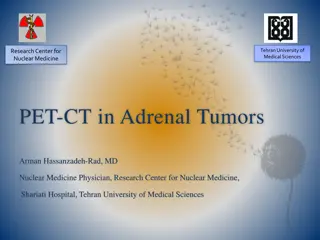Dog Housing: Indoor vs. Outdoor Considerations for Your Pet
Explore the factors to consider when choosing indoor or outdoor housing for your dog. Indoor setups offer comfort and social interaction, while outdoor shelters should be waterproof and elevated. Adequate space, ventilation, and amenities are essential for your pet's well-being. Avoid cramped enclosures to maintain your dog's behavioral health.
Download Presentation

Please find below an Image/Link to download the presentation.
The content on the website is provided AS IS for your information and personal use only. It may not be sold, licensed, or shared on other websites without obtaining consent from the author. Download presentation by click this link. If you encounter any issues during the download, it is possible that the publisher has removed the file from their server.
E N D
Presentation Transcript
Indoor or Outdoor housing Indoor Housing Seek the opinion of other residents
Outdoor Housing * Make sure the dog's house is constructed of water proof materials. Remember to furnish him with sufficient bedding to burrow intoon a chilly night.
Dog Housing * Dog houses which are elevated or situated on a platform helps the animal to protect themselves from dampnessand cold that may seep through the ground. * Dog house, often made of wood, may be indoor or outdoor, should be sturdy and offer enough room for yourdog tostretch out in when it rests orsleeps.
Dog Housing * Proper dog housing needs good ventilation, calmness in the environment, cost facilities, placement of adequate number of feeding vessels and vessels related to watering, drainage facilities etc. effectiveness, lighting
SPACE CONSIDERATIONS * Provision of adequate space is essential for dogs as it affects not only their behavior, but also determines whether the animals can be housed in social groups and whether there is sufficient room for enrichment devices.
Confinement intrinsically restricts the dog's ability to perform species-typical behaviors and to adjust social contact with other dogs.
Small or shallow-depth pens may also not allow the dog to retreat from events that he or she considers alarming at the front of the pen.
Cramped enclosures are associated with a higher prevalence of circling and other stereotypies than relatively large enclosures. This indicates that too small living areas affect the dogs' behavioral health and hence their general well-being. If dogs show stereotyped behavior, then there is good reason to re- examine the particular type of housing and attempt to improve it.
Minimum dimensions for primary enclosures are recommended (Table 1). For example, the minimum floor area for adult dogs of the weight category 10-25 kg is 4.5 m2, both for a singly-housed dog and for two pair-housed dogs. The addition of a third dog, however, necessitates that the floor area be increased by 2.25 m2, i.e., to 6.75 m2.
The area of minimum-size pens should never be reduced, even temporarily partitions [e.g., for toxicology dosing of pair-housed subjects], as it then becomes extremely difficult to provide a structured and enriched environment. The preferred option would then be to double the size of the enclosure so that each dog has access to the minimum spaceatall times. through the use of
The height of the enclosure should at least allow the dog(s) to stand on hind legs without touching the roof (Table 1).
Table 1. Minimum space recommendations for laboratory dogs. Minimum Floor Area m2 (ft.2) per Dog Body Weight kg (lb.) of Dog Minimum Height cm (in.) Housed Singly less than 5 (11) 150 (59.1) 4.5 (48.4) 5-10 (11-22) 150 (59.1) 4.5 (48.4) 10-25 (22-45) 200 (78.7) 4.5 (48.4) 25-35 (45-77) 200 (78.7) 6.5 (70.0) more than 35 (77) 8.0 (86.1) 200 (78.7) * floor area must be not less than that specified for a singly housed dog.
Conclusions Dog kennel design should: Keep the animal(s) in good physical and mental health. Permit easy handling of the dog(s) by personnel. Be large enough to allow group housing of compatible dogs. Be flexible enough to allow pens to be joined together to create larger runs. Provide some refuge from kennel mates through the use of visual barriers. Allow the dog good visibility of the room and of the area outside the pen. Reduce to a minimum sound egress and ingress.
Types of Dog food Although dog food doesn't come in as many shapes, colors, sizes, and flavors as human food, there are still quite a few varieties to choose from. No matter which type you choose, the most important factor in your decision should be finding a food that meets all of your dog's nutritional needs. There are five main types of dog food:
Kibble/Dry Dry food is the most economical type of commercial dog food. It also lasts for a long time and does not need to be refrigerated. Dry food can also help to keep your dog s teeth healthy, since chewing crunchy dry food helps to reduce tartar buildup. 90% dry matter and 10% water
Canned Canned or wet food have a long shelf life but it can be expensive. Most canned food is about 68-70% water and 22-32% dry matter. The higher the water content, the less nutrient content, so the more food your dog must consume in order to get the nutritional value his body needs.
Semi-Moist Commercial dog foods shaped like burgers, or other meaty foods are called semi-moist foods. These kinds of foods are the least nutritional of all dog foods and contain many artificial flavors and colorings. They can be given to your dog as an occasional treat, but they should not be considered a diet in themselves, as they do not provide the nutrition that your pup requires. 68-70% water and 22-32% dry matter.
Home Cooked A home-cooked diet allows the owner to know for certain exactly what is in every thing her dog eats and to be absolutely sure that his nutritional needs are being met. Feeding your dog a home-cooked diet is time consuming and expensive. If you decide to feed your dog a home-cooked diet, get well acquainted with canine nutrition so you can be sure your dog is not missing out on any vital nutrients.
Raw A raw diet consists of raw meat, preferably with some bones and organs mixed in, as bones are a natural source of phosphorus and calcium. This type of diet works well for many dogs, since dogs have short intestinal tracts and strong stomach acids, both of which make it easy for them to consume and digest raw food.
FEEDING The first 8 weeks Puppies should not be separated from their mother before they are 8 weeks old. Puppies who leave their mothers sooner have a rougher time adjusting and a higher incidence of illnesses. Their mother's milk provides them with the nutrition and antibodies they need to become healthy dogs. At 3 to 4 weeks, puppies should begin eating some solid food. If your puppy begins eating a little solid food before they leave their mother they will have an easier time adjusting when you bring them home.
6 to 8 weeks Feed puppies 3-4 times a day. Puppies have different nutritional needs than adult dogs. Choose a puppy food that provides the appropriate balance of nutrients your puppy needs. Be sure they are getting the right amount of protein and calcium, and the proper amount of calories. Check the label to determine if you are feeding the puppy a balanced diet. Meat should be the first ingredient on the label.
After 8 weeks Feed your puppy twice a day. 3 to 6 months Your puppy will be teething. He may become a finicky eater or lose his appetite. Keep feeding him nutritious food twice a day. 6 months to 1 year Your puppy may look all grown up but he is still a puppy. He should still be fed puppy food for the added nutrition. Feed him the puppy food for the first year. In some larger breeds even into the second year. 1 year About the age when pups should be switched to adult food. Age may vary depending on the size of the dog.
Good Basic Feeding Tips Feed your puppy the same kind of food every day. Unlike humans, a dog's digestive system cannot handle changes in food. It can cause upset stomach and diarrhea. When switching to a new food, gradually transition him to the new food by mixing portions of both foods until you slowly phase the old food out. Feed your puppy at the same time every day. Always have fresh drinking water available. Keep food and water bowls clean. Don't overfeed your puppy. Follow the guidelines on the puppy food package for recommended feeding amounts.



